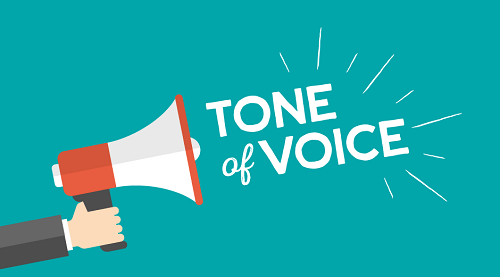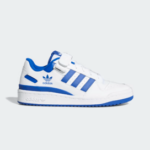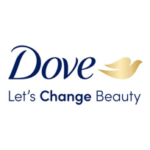Crafting an Engaging Brand Tone of Voice
What is a brand tone of voice? In simple terms, tone is how you convey your message, while voice is your unique personality shining through. While the tone may shift like the wind, your voice remains unwavering.
Understanding the significance of tone of voice is crucial for any writer. It shapes how your message resonates with readers. As a writer, mastering this art empowers you to craft engaging, distinct, and genuinely captivating content. This separates your work from the monotonous and predictable content flooding the internet.
Surprisingly, only a few writers truly invest the time to excel in the tone of voice. Therefore, writers need to recognise its potential to transform ordinary material into extraordinary pieces.

Difference between Tone and Voice
Distinguishing between tone and voice can be tricky as they share similarities. Voice represents a brand’s distinct personality that comes alive in their writing. On the other hand, tone refers to the way a specific message is conveyed.
For instance, the way you communicate with readers in a casual blog post would differ from how you engage with them on a customer service page – that’s a shift in tone. However, your writing style would remain consistent, reflecting your unique voice.
“It’s also been found that consistent branding across all channels increases revenue by 23%.”
Brand Tone of Voice Matters
Brand voice refers to the unmistakable and identifiable way a brand communicates through spoken and written words. Crafting a unique and memorable brand tone of voice is a potent tool for setting a brand apart from its competitors . In addition, you need to be careful when using AI generated content tools.
Moreover, a well-defined brand voice fosters stronger customer connections by infusing a human and relatable touch into the brand’s identity.
Whether on social media, advertising, or website content, customers should effortlessly recognise and associate with the consistent brand voice that resonates with them on every occasion.
How to Define Your Tone of Voice for a Competitive Edge
Know Your Audience
Defining your brand voice starts with a clear understanding of your target audience. Embrace authenticity, knowing your brand won’t resonate with everyone, and that’s okay. To make a powerful impact, precisely target a specific audience through in-depth customer interviews. Moreover, engage with your most valuable customers to uncover their motivations and insights.
These interviews lay the foundation for creating an audience persona representing your ideal brand-engaged individual. Address vital questions about your target audience’s age, location, education, workplace, role, and hobbies. This comprehensive persona goes beyond demographics, providing valuable insights to guide those embodying your brand voice.
Who is Your Competition
Conducting a competitive brand audit focused on verbal brand identity is vital to grasp the voices prevalent in your competitive landscape. Follow these five essential steps:
- Identify Top Competitors: Identify at least five competitors in your industry.
- Gather Communication Samples: Collect messaging and communication samples from various channels like websites, marketing materials, and social media.
- Compare Verbal Identity Assets: Analyze and compare brand names, taglines, messaging, and other crucial elements.
- Evaluate Strengths and Weaknesses: Assess each competitor’s brand strengths, weaknesses, and prevailing industry trends.
- Identify Differentiation Opportunities: Utilize gathered insights to identify valuable opportunities to set your brand apart in the marketplace.
Understanding your competitive landscape clarifies what’s suitable for your industry and helps you avoid generic industry jargon, ensuring your brand remains unique.
How to Better Understand Your Brand
Understanding your audience and competition is as important as understanding your brand itself. The most authentic brand voices are those born from rigorous brand strategy. This means taking the time to understand your brand’s messaging before you set out to craft its voice. Critical brand strategy assets that will help to hone your brand voice.
The 5 Brand Pillars:
- Purpose
- Positioning
- Personality
- Perception
- Promotion
Purpose
Your brand’s purpose is the motivation behind all your actions. In today’s world, customers seek purpose-driven brands. From website content to social media feeds, let purpose guide every message you deliver to your valued customers.
Positioning
Brand positioning is the unique space your brand occupies in customers’ minds relative to other brands. Whether budget-focused or luxurious, emphasising selection or convenience, indulgence or prudence, your brand’s position is determined by its relevance to these factors. Effective positioning is vital for standing out in the market and securing customers who choose your offerings over alternatives.
Personality
Brand personality is the sum of your brand’s human characteristics like behaviours, emotions, quirks, etc. Effective brand personalities are evident in the world’s most successful brands. They’re relatable on a human level because they speak in human voices and have recognisable and resonant qualities.
Perception
Brand perception is how customers experience your brand, encompassing positive and negative connections. It is the customers who define how your brand is perceived. Nevertheless, branding plays a pivotal role in shaping customer perceptions, making it a significant aspect of the process.
Promotion
Brand promotion involves engaging, enticing, and motivating customers to connect with your brand. It differs from marketing promotion, focusing on short-lived, highly targeted campaigns. On the other hand, brand promotion aims to cultivate brand loyalty and build brand equity that grows in value over time.
Dimension to Tone of Voice
To assess your brand’s tone of voice, you can utilise the four dimensions provided by the Nielsen Norman Group and map where your brand stands in each category:
- Funny or serious
- Formal or casual
- Respectful or irreverent
- Enthusiastic or matter-of-fact
This process will assist you in establishing the desired communication style for your brand.
Examples of Brand Voice
What instantly comes to mind when you think about these brands?
Adidas

“Impossible is nothing”
- Inspirational
- Easygoing
- Revitalising
Coca-Cola

“Taste the feeling”
- Refreshing
- Motivational
- Happy
Dove

“Let’s change beauty”
- Confident
- Self-Love
- Inspire
Guidelines on How to Create a Brand Voice
Most importantly, your tone of voice is crucial to connecting and engaging with your audience. The key to success lies in harmonizing it with your brand values, mission, and audience preferences.
Once you have a precisely defined tone in mind, ensure it aligns seamlessly with the content format you employ for effective communication.
Now it’s time to create your brand tone of voice using this doc: https://docs.google.com/document/d/12mWbBXfv5Vk_0KSe9SB_77CkxUFmal2AsoYcuCHDcf8/edit#heading=h.azsiwiwk4t4k (link source: Semrush)


